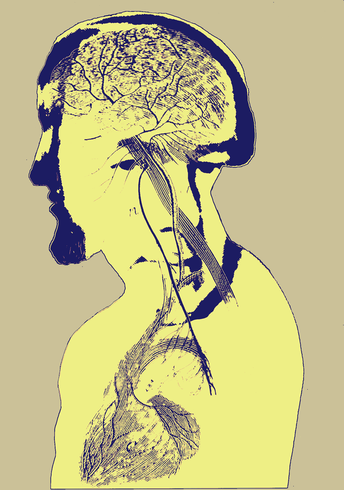Claude Bernard1813–1878
Bernard introduced the concept of the milieu intérieur - the regulatory function that the nervous system applies to the stability of internal secretions and tissues. It anticipated the notion of homeostasis, introduced by Walter Cannon (1871-1945) in 1932, which has been at the heart of many psychological theories of learning and motivation. In his experimental studies of salivation, Bernard came close to describing classical conditioning: “Taking a fasting horse, you expose the duct of the parotid gland on the side of the jaw; you open the duct, and no saliva flows. If you then show the horse some oats or, even better, if you do not show him anything but make a motion which indicates to the animal that you are going to feed him, immediately a jet of saliva flows continuously from the parotid duct”. A quarter of a century later Pavlov proposed a process for such conditioning, using similar experimental techniques. The range of Bernard’s experimental research was vast, being concerned initially with digestion and its nervous control, and extending to the whole of experimental physiology and its philosophical underpinnings. His influence on physiology, both through his teaching and his many textbooks, was far-reaching. His studies of control mechanisms in the vascular system led him to propose a more holistic view of physiology: he stated that “Systems do not exist in Nature, but only in men’s minds”. Bernard rejected the prevalent approach of comparative physiologists who emphasised species differences, proposing a general physiology which “does not seek to grasp the differences that separate beings, but the common points that unite them”. He was also sceptical about the use of averages in the study of complex systems, favouring the presentation of results from the “most perfect experiment” as a reflection of the true state of affairs. Bernard was born near St. Julien on the Rhône and was to return there frequently from his laboratories in Paris to ponder over his physiological discoveries. He came late to the study of medicine and was greatly influenced by François Magendie, with whom he collaborated and who turned his interests away from medicine and towards experimental physiology. Bernard succeeded Magendie at the Collège de France and later a special chair of physiology was created for him at the Sorbonne. As a young man he moved to Paris to pursue a literary career. Despite being directed away from literature his scientific writing resulted in his election to the Académie Française. Bernard is shown within a diagram of the nerves connecting the heart and the brain, taken from his Leçons sur les Propriétés des Tissus vivants (1866). This book represented his approach to physiology by emphasising the unity of living processes rather than focusing on species differences: he sought “to return to the elementary condition of the vital phenomenon, a condition that is identical in all animals”.
